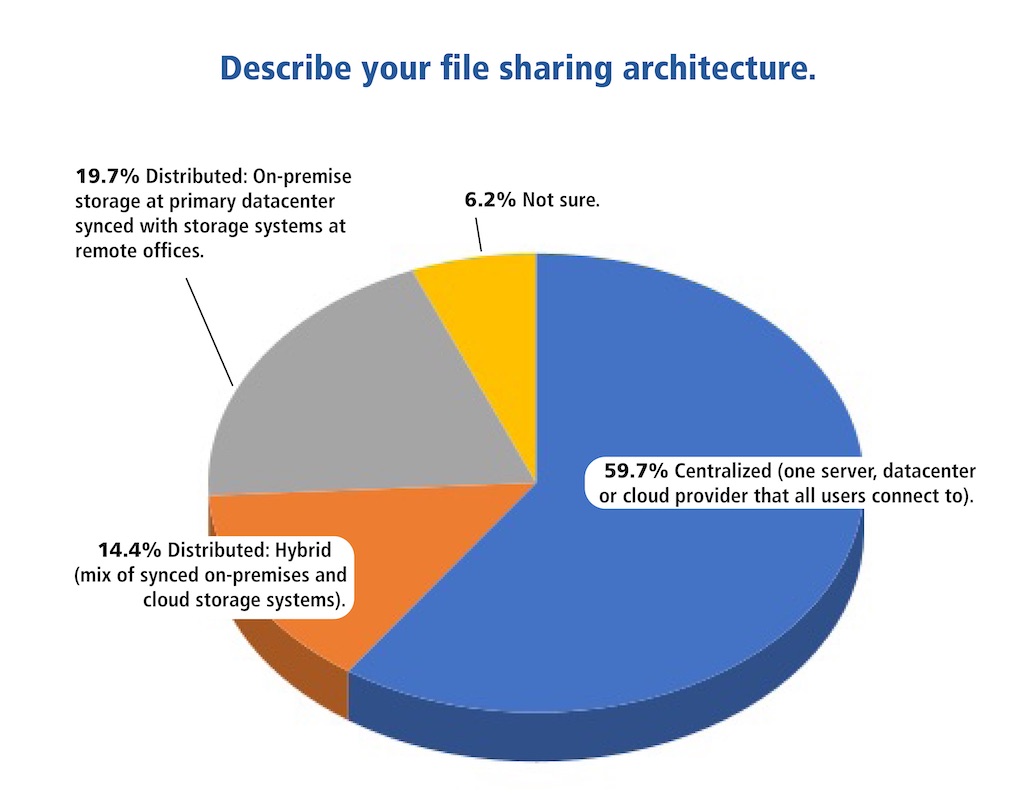
Image source: FutureStock/stock.adobe.com.
Well, it is now 2024 and in the New Year we traditionally take stock of where we’ve been, where we’re going, and what resolutions and changes we want to make. CAD managers should undertake this same review/resolve exercise so we can update our plans for the upcoming year.
In this installment of the CAD Manager’s Newsletter I’ll update my recommendations and resolutions from prior years for the New Year and add some new information about current trends along the way. Here goes.
Author’s note: As always, I base my opinions and draw conclusions on my interactions with CAD managers, senior management teams, and personal experience — your mileage may vary.
IT Continues to Dictate CAD Policies
The trend of CAD being managed more by IT policies and cloud infrastructure accelerated big time during COVID. As companies struggled with how to host remote meetings, control files, and integrate new technology for remote work, CAD became less about CAD and more about remote work management.
This IT trend shows no sign of abating as changes in file sharing, cloud apps, scattered resources in Teams silos, remote access issues, and CAD licensing. IT management is an ever-larger part of the job. Think you can go back to just worrying about CAD or BIM now that the world is back to normal? Nope. The expectation for remote work has been set and we’ll all have to become ever more IT savvy to keep our CAD tools running properly so projects are executed smoothly.
What resolutions can we make for this increased IT burden and how should you approach the task?
Resolve to: Manage your CAD and IT resources in a way that makes things easier for users to work with tools and files, saves money whenever possible, lowers the chance for costly errors, and maximizes speed of operations. This should be your sole focus and anything that is outside these objects should be on your low priority list.
Resolve NOT to: Update software that is already working well, undertake big organizational changes, or enter into expensive new software contracts without seeing PROOF from vendors or your internal IT staff that the changes will work and are worth the time it will take for any training needed.
Software Costs Go Even Higher
Any of you who participate in budgeting know that software costs keep increasing. And, more and more, it isn’t the cost per seat that is driving up costs so much as other ancillary factors. These trends became prominent last year but are accelerating and will become even more common this year. Consider the following:
- Named user policies mean license sharing or “pooling” can no longer be used to keep costs down.
- More and more “extras” and “upcharges” are being applied, such as premium fees for Single Sign On (SSO) or cloud data tools.
- Migration from traditional desktop-based CAD/BIM tools to a patchwork quilt of cloud applications costs a substantial amount of implementation time and time is, after all, money. Plus, in my experience, these new tools are often bug-ridden and require substantial trouble shooting.
- Administrative burden — in terms of IT and CAD manager time — continues to increase as licensing compliance becomes a more challenging task.
- Dealing with licensing issues like AWS server outages that power cloud-based licensing and application services can cause serious loss of production time. Sometimes this can’t be avoided, but you should be aware, nonetheless.
Taken together these trends are making CAD tools more expensive and senior management teams are noticing. As I predicted in 2023, company CFO’s and boards are doing all they can to reduce seat counts and licensing costs. This trend will only accelerate in 2024.
So, what can we do?
Resolve to: Ruthlessly justify and optimize what you already have — especially if you can leverage perpetual software tools rather than annual subscriptions. If you don’t really need it, get rid of it.
Resolve to: Skip software updates to keep implementation costs down unless absolutely required.
Resolve to: Analyze what software your users need to do their jobs and lower license counts aggressively to save.
Resolve to: Skip the AI (artificial intelligence) hype unless it can be PROVEN that it will save you money in your current usage patterns.
Resolve to: Replace expensive tools with less expensive tools if you can. Downgrade casual users to lightweight tools, etc.
Resolve to: Be creative in using remote access and machine sharing to keep software costs down. I’m not telling you to violate any licensing policies here, but I am saying do everything you can to keep seat counts down.
Resolve NOT to: Buy software that isn’t mission critical at your location or cave-in to software company pressure to buy things you simply don’t need.
CAD Software Becomes More Modular
The good news now is that a whole new selection of products (not from the big CAD software houses) are making CAD a more modular and plug-in architecture than in years past. Products such as Enscape, Grasshopper, and Lumion are changing the visualization and complex surface modelling environments, for example. And, as more modules that operate with IFC file formats permeate the BIM environment, the environment will become even more modular.
So, how should you take advantage of this? How do we navigate this complex, plugged-in and modular landscape?
Resolve to: Evaluate any modular tools based on their function and merit and to only use those tools that provide value to your users/company — particularly if you can replace subscription tools with perpetual tools.
Resolve NOT to: Allow users to install proprietary plug-ins or modular apps on workstations, tablets, or phones that deviate from your CAD/BIM application’s native OS without specific vetting from you and/or IT.
Operating System Heartburn
Powerful hardware and the relative stability of Windows 10 made it easy to specify CAD machines in the past, but new machines almost all ship with Windows 11, making it likely you’ll manage mixed OS environments. Because legacy applications sometimes have problems on Windows 11, I try to keep everyone on Windows 10 if I can by ordering new machines with Windows 10 Pro installed with a Windows 11 Pro license upgrade included.
So, what is the minimum configuration for CAD/BIM you should you specify to IT then? Use these guidelines.
Resolve to: Purchase i7/i9 machines with at least 5Gz turbo frequency and as high a base processor frequency as you can afford, 32GB RAM, 1TB high-speed solid-state disk, and a 6GB or higher GPU that supports four monitors at 4K resolution at a price point less than $2,500 for desktops and around $3,000 for mobile machines. Continue to specify Windows 10 if possible. (This refers to US pricing.)
Resolve to: Get more involved with IT at your office and “become one of the tribe,” so they’ll take you more seriously when you make requests.
Resolve NOT to: Get bullied into accepting less. Any new machine should be robustly spec’d and supplied to those who need the power. If that means recycling existing machines to lower end users then so be it. The motto for CAD/BIM hardware must always be onward and upward.
Inflation Leads to Staff Shortage Issues
2022’s “Great Resignation” was followed by 2023’s “Back to the Office” push by many companies. New staffers are still very hard to find and the inflation during the last two years has made staff retention harder as job hopping has become more prevalent. I’ve noticed a trend towards keeping staff levels the same while building internal skill sets to get more done per staffer this past year. CAD managers will likely continue to be more pressured to “be billable” and to “work more on projects and less on CAD management.” (I put these phrases in quotes because I hear them all the time from management teams.)
So, how can we keep these staffing issues from becoming a stressful problem?
Resolve to: Do the best you can given the circumstances, stay as calm as possible, and deal with your day-to-day tasks professionally. Do all you can with who you’ve got.
Resolve to: Build up the staff you have with mentoring and information training as much as possible. Challenge those around you to get smarter and more productive. And, when management says, “We shouldn’t train people because they might leave,” your response should be, “But what if we don’t train them and they stay?”
Resolve to: Prioritize your task list to get the greatest amount of project output possible. And, if you can create more project output by being a CAD manager working on projects, then that’s even better, but when all else fails project output trumps everything else.
Resolve NOT to: Work killer-hours week after week after week, as it only leads to burnout.
CAD Management More and More Part-Time
With each passing year the CAD manager’s role becomes more diluted, more part time, viewed more as overhead rather than valuable work, and less understood as IT becomes more involved with the ever-increasing complexity of CAD technology. Sadly, 2024 will see this trend continue.
It seems that as CAD software becomes more expensive, there is less desire to invest in the necessary CAD management to make it work well. This is the real reason why CAD management is becoming less valued.
So, how can we break the cycle of this distressing trend? Here are my time-tested strategies that haven’t changed in years:
Resolve to: Make CAD and BIM coordination part of the discussion in every project you do and speak up when you see mistakes made. If everyone respects your expertise, they’re much more likely to value you.
Resolve to: Evangelize on driving standards and project coordination being error reduction tools that SAVE money rather than COSTING money. There will be more support for CAD management if everyone around you understands the value of it.
Resolve NOT to: Suffer in silence or accept poor work practices. Management wants things to run efficiently and they need to understand that you are the resource that makes that happen.
Resolve NOT to: Stay in a dead-end job. The market for high-end CAD professionals is great so you DO have options.
Summing Up
Now, I encourage you to create an action items list for the coming year and figure out which resolutions you should take to heart. I find that writing it all out — using a pad of paper and pen — really imprints these things into my brain, but I’ll leave that to you. My hope is you now feel inspired to act and have a good idea what to do.
2024 looks to be the year where things get “back to normal” after COVID, but that doesn’t mean that CAD management will go back to the way it was. And, that’s why you need to revise your plans every year. But no matter what, working smart to get more production done while saving money will never go out of style. Happy New Year. Until next time.

Robert Green
Robert Green performs CAD programming, standardization, and consulting services globally. He is the author of Expert CAD Management: The Complete Guide. Reach him via his website (greenconsulting.com/).
View All Articles




Share This Post